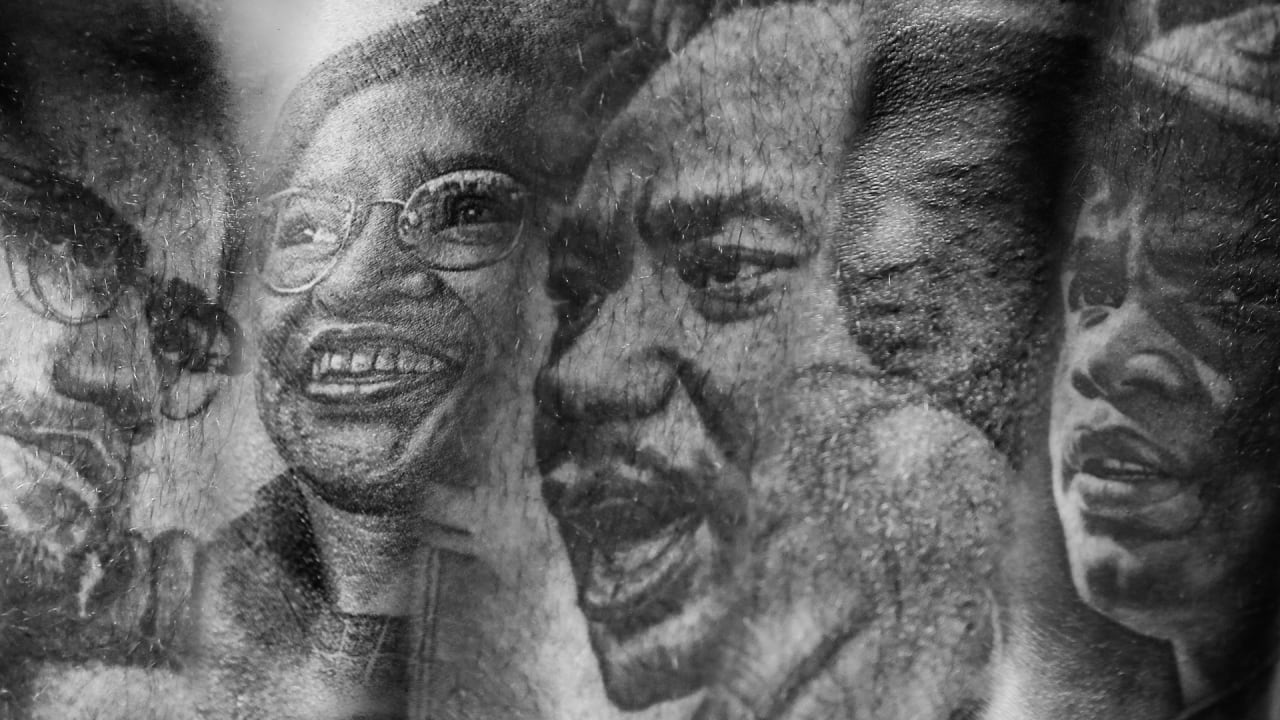Miles
Well-known member
- Mar 18, 2019
- 2,455
- 0

The two vocal civil rights leaders King and Malcolm X were first, and Jackson sat for a two-day session with Nikko Hurtado, a renowned tattoo artist who specializes in portraiture.
King's face, pictured mid-speech, lies just below Malcolm X, whose face is frozen in deep thought, chin resting on his closed hand.
In life, the two met just once. Their views diverged over the ideology of nonviolence when it came to asserting their personhood in the face of often-violent retaliation. King resolutely believed in nonviolence while Malcolm X favored a separatist vision, though his views evolved in the years prior to his assassination in 1965. Still, their shared end goal of civil rights for African-Americans bound them together.
"While we did not always see eye to eye on methods to solve the race problem, I always had a deep affection for Malcolm and felt that he had a great ability to put his finger on the existence and root of the problem," King wrote in a telegram to Malcolm X’s wife following his death. "He was an eloquent spokesman for his point of view and no one can honestly doubt that Malcolm had a great concern for the problems that we face as a race."
Three years later, King was also assassinated. America lost its two most prominent civil rights leaders in the midst of their battles, but the fruit of their work lives on for generations of black Americans, including Jackson.
"Definitely different methods, but definitely all for the same cause," Jackson says. "Martin Luther King being more of a peaceful guy with peaceful protests and [he] did a lot with his speeches, with the famous 'I Have a Dream' speech and stuff like that. Malcolm X and the things he did were a little bit more forceful in the way that he did things, but definitely all for the same cause."
A year later for his other leg, Jackson chose Jackie Robinson, who broke Major League Baseball's color barrier in 1947, and Muhammad Ali, who, in addition to being widely recognized as the greatest boxer who ever lived, championed the civil rights movement and often spoke out about racial injustice.
The decision to get portraits of those two legends was a way to pay homage to them for their roles in paving the way for black athletes like himself to play their sports at the highest level and to be viewed as more than just as an athlete.
"It's just paying tribute to them and also the barriers they were able to knock down, to allow African-Americans to have equal rights on the sports side of things," Jackson says. "A lot of the things they were able to accomplish is still huge for us and the way we were able to go out and be able to play the sports that we play today."
Jackson's most recent tattoo portrait came in January, when Rosa Parks joined the grouping on his right leg.
That decision simply felt right.
"I felt like Rosa Parks was just the next figure, the next person that was huge for the African-American culture," Jackson says. "And the things that she did … not settling for having to sit on the back of the bus, that was huge for a lot of people back in that time, and still the things that she did allows us to move freely in and to have the same rights as a lot of people today."
